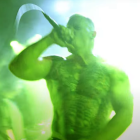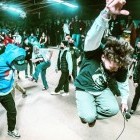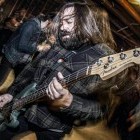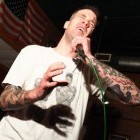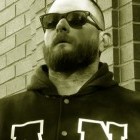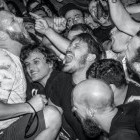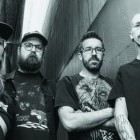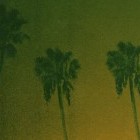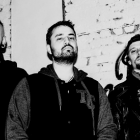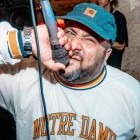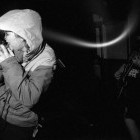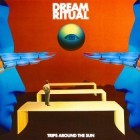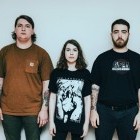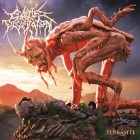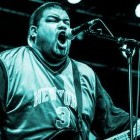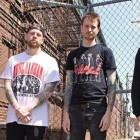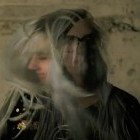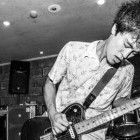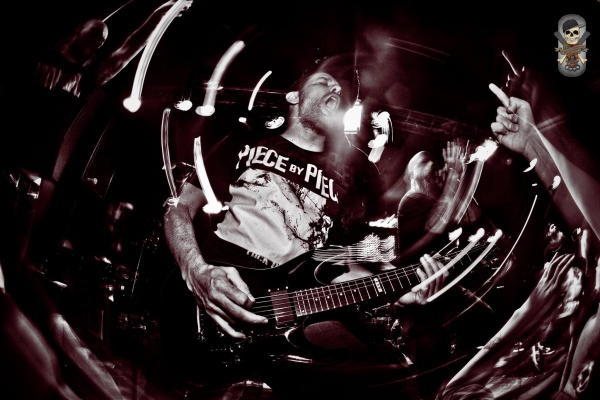
Since forming in 1991, Strife has gone on to become one of the most seminal hardcore bands of the last couple of decades. Sift through the discography of labels like Bridge Nine Records and Deathwish Inc and you'll find many bands who have been influenced by the California outfit. Going back to Strife's earliest days, Andrew Kline's guitar work has been a huge part of their success. His metal-tinged riffing has made albums like One Truth and Witness a Rebirth a treat for both hardcore and metalheads alike.
In 2016, Kline joined forces Scott Vogel (Terror, Despair), Arthur Smilios (Gorilla Biscuits, CIV), Joe Garlipp (Fadeway, Despair), and Sammy Siegler (Youth of Today, Judge) in World Be Free, a melodic hardcore band that has to date released one album on Revelation Records. Kline is also behind WAR Records, a label that has issued releases by Reality Slap, Shadow of Doubt, and Piece by Piece, among other acts.
In this brand-new interview, I chat with Kline about his childhood in Southern California, Strife's history, and his future plans.
Were you born and raised in Southern California?
I was actually born in Manhattan. My family moved to Southern California when I was just a baby. I grew up in a city called Thousand Oaks, a small suburb just north of Los Angeles.
What was your childhood like?
My childhood was pretty normal… I played soccer, collected Garbage Pail Kids, and then I discovered skateboarding.
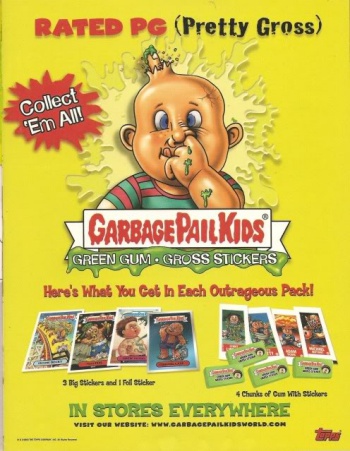
What was the first type of music that you gravitated towards as a kid?
Growing up, there was always music in my house. From the Beatles, to Nina Simone, Max Roach, Miles Davis, etc. My Dad had a pretty large record collection and he would play them often. He didn’t play an instrument, but somehow he had the ability to listen to jazz on the radio and identify all of the players just by the sound of their instruments. I remember getting a toy drum set when I was really little. I took piano lessons for a while and then made the switch to the trumpet for some strange reason. I was in the marching band briefly, and I made another switch to play the Timpani. I quit the band and picked up the guitar soon after.
I was always into music. I bought my sister License to Ill on vinyl for Christmas the year it came out. I remember buying my brother Eazy-E Eazy Duz It on CD for Christmas another year. The first music I can recall buying for myself was Depeche Mode A Broken Frame and Corrosion of Conformity Technocracy, both on cassette sometime in the 6th grade.
I think my music tastes at that time were all over the place. I was getting into hip hop quite a bit, and even auditioned for the talent show in 5th grade doing a version of the Beastie Boys “Paul Revere.” I remember being really into INXS and buying the Vision Psycho Stick skateboard after getting their album, Kick, as well.
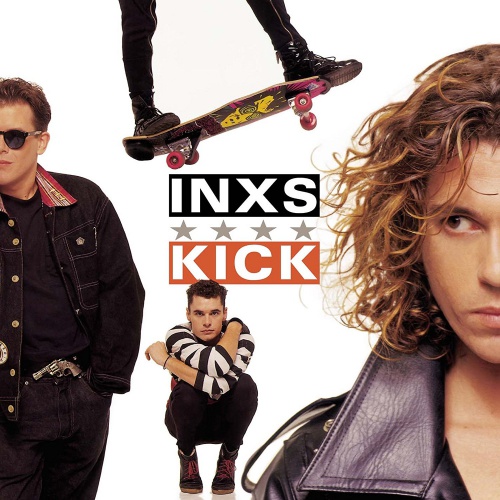
Were you an MTV kid like I was?
I was really into MTV growing up, but I didn't have cable TV in my house until 8th or 9th grade. I would go to my friend Jesse’s house after school and watch as much MTV as I could until I had to go home for the night.
SEE ALSO: 2017 interview with Chris Kelly (97a, Teamwork Records).
How did you first come across hardcore music? Was there someone that acted as a mentor to you in that regard?
Skateboarding was definitely the path that led me to punk and hardcore. The first punk song I can remember hearing was “GDMFSOB” by Bad Posture. I had an older family friend that lived in Santa Barbara and he would tape the college radio shows there. I didn’t even know what it was, but my brother and I thought it was hilarious. I was probably in 4th grade and I guess it made an impression.
I got really into skateboarding in fifth grade. One of my friends, Mike, had an older brother that was really into punk and metal. Through him I got into bands like Misfits, DRI, Minor Threat, Black Flag, Excel, and Suicidal. Those were the bands with wider distribution, and more or less the only stuff you could fins at the local Warehouse or Music Plus.
My parents got divorced when I was in 6th grade. I met my new neighbor at my Dad’s house in the summer before 7th grade. He was really into punk, hardcore, Oi!, and ska and played drums in a pretty cool punk/garage band called Scratch Bongowax. He was about 10 years older than me and had a huge record collection. Every week or so, he would loan me a handful of records and I would take them home and record the ones I liked to tape. He had everything from Negative Approach, Agnostic Front, The Freeze, The F.U.’s, Bad Religion, Blitz, Condemned to Death, Operation Ivy, Descendents, Neurosis, and more. I would dub the tapes and record myself announcing the band and the name of the record as if I was on the radio. I would sit up all night and hand drawn my own version of the art for the covers of the tapes. I still have a few of these old cassettes in my collection.
In 7th grade I really dove headfirst into music and skateboarding. I would skate to school everyday with my group of friends and we would all listen to music and trade tapes and stuff. We all loved Suicidal and Excel and we all planned on starting a band. I was supposed to play bass, but I bought a guitar instead. It was a really ugly cheap guitar that was black with green lightning all over it.
By the end of 8th grade I realized that I was getting really into the more hardcore stuff.
Once I started High School I was pretty much just into skateboarding and punk and hardcore. I had a friend named Jeff Moore who was just a year older than me, and he was really into punk and hardcore as well. On the weekends we would convince his older sister to drive us down to Zed Records in Long Beach so we could buy records and zines. She took us to a few shows as well. There was hardly a scene where we grew up. Jeff and I were the only straight edge kids at our High School, and there were a handful of other kids into punk and hardcore in the neighboring cities and High Schools, but it was really small. Once Strife became a band that all changed.
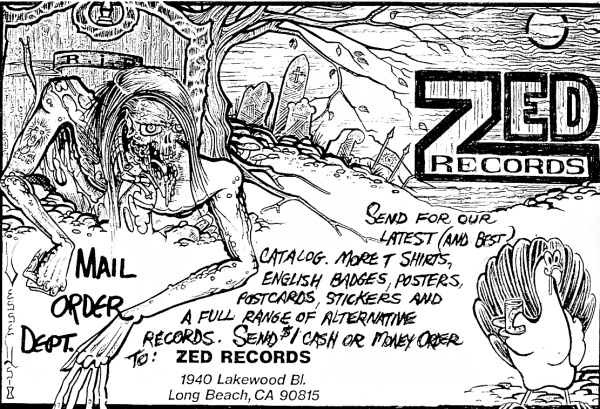
What were some of first hardcore bands you saw perform live?
The first real band I saw was Circle Jerks at the Country Club in Reseda, early on in 1990. They played with Neurosis (Pain of Mind era) and NOFX (S&M Airlines era). From this show on I was totally hooked. We were fortunate enough to have a place like The Country Club, which was less than 30 minutes from our house. Every weekend we would pile into a friend’s car and see bands like Bad Religion, Insted, Gorilla Biscuits, Judge, MDC, Chain of Strength, Social Justice, and more. I didn’t drive until I was 18, so I relied on older friends to get me to shows. Eventually, we started driving down to Spanky’s Cafe in Riverside (about a 3-hour drive) where the bulk of the smaller hardcore shows were held. This place was a small Middle Eastern café that maybe held 300 people. We saw so many bands in that tiny room… Infest, Insted, Neurosis, Farside, Forced Down, Undertow, Statue, Even Score, XChorusX… If you were a band in the early '90s, you were playing Spanky’s. Other venues that we went to early on were the Anti-Club in Hollywood, Toe-Jam in Long Beach, and the Red Barn in Santa Barbara. I would go to almost every show that I could.
SEE ALSO: When Hardcore Bands Went Hard Rock
Did you play in any bands before Strife?
It’s crazy to think that Strife was my first band (although we were called XStand As OneX when we started). We were just a tight group of friends that wanted to play music. None of us were “musicians." I think this friendship is why the band has lasted for as long as we have. We have had a few other players along the way, but everyone that plays in Strife now, aside from our drummer Adam, has been playing in the band since about 1994.
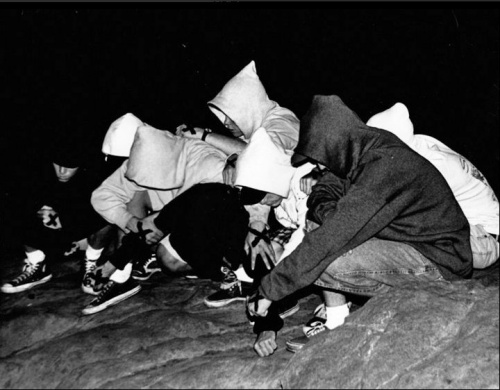
What is the Reader’s Digest version of how Strife formed?
Remember my friend Jesse I mentioned earlier? We would all hang out at his house and skate out front and stuff. He had a new neighbor that just moved in town from Riverside named Sid. I met [future Strife drummer] Sid [Neilson] skating one day and we instantly hit it off. He was really into skateboarding, punk, and hardcore as well, and he played drums in a band called SDI (Society Defeated by Ignorance) out in Riverside and had already played shows with bands like DRI, Agnostic Front, Youth of Today, and more. He let me borrow the Minor Threat Live at the 9:30 Club VHS the day we met, and we have been friends ever since!
Sid was a few years older than me, so we started going to shows together right off the bat. We met [future Strife vocalist] Rick [Rodney] outside of a MDC show at the Country Club. He was from a town called Moorpark, and he was already in a band called Monster Club (pre-Still Life). Soon after we met, Rick was driving out to Thousand Oaks almost every day to hang out with us. Eventually Rick and Sid started a band with this metal dude named Jim playing guitar (he worked with Sid at Toys R Us). Jim was a great guitar player, but he was really flakey and didn't make it past a few practices. I remember going to Sid’s house one day and we started jamming in his room. The first half of the song “Dedication” was written that day, and I was officially in the band. Our original bass player was a kid named Scotty who grew up close to Rick as well. He was kind of getting out of hardcore at the time, and he just sort of disappeared. [Future Strife bassist] Chad [Peterson] was part of our crew, but didn’t really play an instrument. We told him he was going to play bass and it just sort of happened.
Did you guys have a very clear vision of what you wanted to do with the band?
We were all into punk, but we knew that we wanted to be a straight edge hardcore band. Most of the bands from the '80s were breaking up or winding down, and we wanted to start a band that had the same spirit of some of our favorite bands of that time. Outspoken had just started being a band, and we saw them a few times right when their demo was released. I think the first time we saw them was at The Country Club with Chain of Strength and End to End. They would have these were Monday night shows that would almost always be empty. Outspoken played and we were blown away. We all bought demos and shirts that day, and we quickly became friends. Our first show was a benefit for Last Chance for Animals that Rick put together in Moorpark. It was Outspoken, Downcast (they cancelled), Monster Club, and XStand As OneX. Our next show was another show that we put together in Moorpark with Chain of Strength, Outspoken, and Solitude (Drift Again). The guys from Mean Season had a band called XHave No PartX and they ended up jumping on the show and playing a few songs. We played a few more shows as XStand As OneX and then we decided that we wanted a name that was a little less generic… Strife was born. We had become really good friends with [New Age Records owner, Outspoken guitarist] Mike Hartsfield and the Outspoken guys. Mike would drive down from Big Bear on the weekends and stay with Sid. Eventually Sid asked him to play second guitar, and he said yes. That was a big moment for us at the time.
Thinking back to the era that Strife formed in, who were some of the other West Coast hardcore bands you considered your peers?
There were a lot of new bands starting at that same time that we became friends with early on. We would go to shows every weekend, so we were always meeting people and trying to get Strife on shows. A few people that were really helpful and instrumental to us playing shows at that time were Mike and Outspoken, Katon from Hirax/World Trust (Zed Records employee), Igby from Zed Records, Ezzat from Spanky’s (and later the Showcase Theatre), and Ray and the guys from Social Justice.
Was there a strong bond between the bands, or did competition play into things?
Most of the bigger bands were from Orange County, and that scene was pretty tight knit and cliquey. We were a bunch of crazy kids from Ventura County, and no one really wanted to put us on shows until they realized that every time we played we would bring a few car loads of kids from our town that all went crazy.
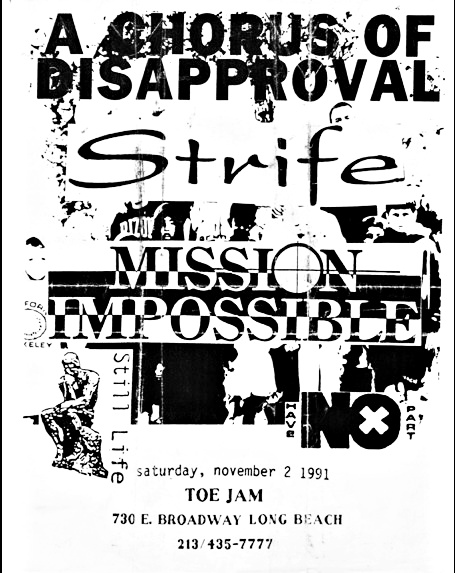
There were two Strife 7”s released, on two different labels (New Age Records, Indecision Records), before the band signed with Victory Records. This was obviously before all of the anti-Tony Brummel stuff that has become legendary in the hardcore world.
We met Tony in 1990 or so, when Even Score was on a West Coast tour. We played a game of “Butts Up” outside of Spanky’s and we stayed in contact a little bit after those shows. It was great being a part of New Age Records in the early '90s. They were by far the best label at that time, and we made so many lifelong friends with people in the bands on that label. Our 7” was the first release on Indecision Records that was run by our friend Dave Mandel. He was running Indecision Fanzine and started releasing records. I think the real turning point came for the band with the release of the It’s for Life comp in 1992 and the Only The Strong MCMXCIII comp on Victory Records in 1993. These two songs showed a new direction for the band, and they were more focused and angry than anything we had released at that point. We booked our first East Coast tour in 1993 after the release of these two comps and we could really see that those songs were resonating with the crowds.
A few labels contacted us after the release of the Only The Strong MCMXCIII comp. I still have a letter from Metal Blade Records that was sent to us in 1993 when they were interested in signing us. Victory was still a new label, but we could tell that Tony had the drive and ambition to see the bigger picture and that they could help take us to another level.
One Truth came out in 1994 and instantly had an impact within the hardcore scene. When did you first realize that the album was connecting with people on a deeper level? I imagine that happened on the tours for that record.
One Truth came out in November of 1994. We were on a US tour at the moment, and I could tell that people were excited about the record, but it was much too soon to see any impact. In March of 1995 we played a show in Los Angeles with Snapcase, Undertow, Ignite and a few others. This was the first show I could really see something different happening. The show was packed with 600 or so people, and from the first notes of “Through and Through,” people were just going insane. There is a video from that show on YouTube, and you can probably count 50 stagedives in the first 60 seconds or so! We documented the subsequent tour in the One Truth Live VHS. These were some of the best shows that we have ever played, and you can really tell that kids were connecting with the songs from the album.
I’ve seen Strife in recent years, and I’ve noticed that while the crowds are still obviously predominately made up of hardcore fans, there’s also a good amount of metal folks into the band now. Was that also the case back during the One Truth era?
We always tried to bridge the gap that existed between the punk, metal, and hardcore scenes. I still feel that the only way that the hardcore scene will grow is if you play to people outside of your scene. We would tour and play shows with bands like Voodoo Glow Skulls, Incubus, Descendents, and others. In 1997 we toured with Sepultura on the Roots tour. This little stamp of approval from them definitely opened us up to more metal fans.
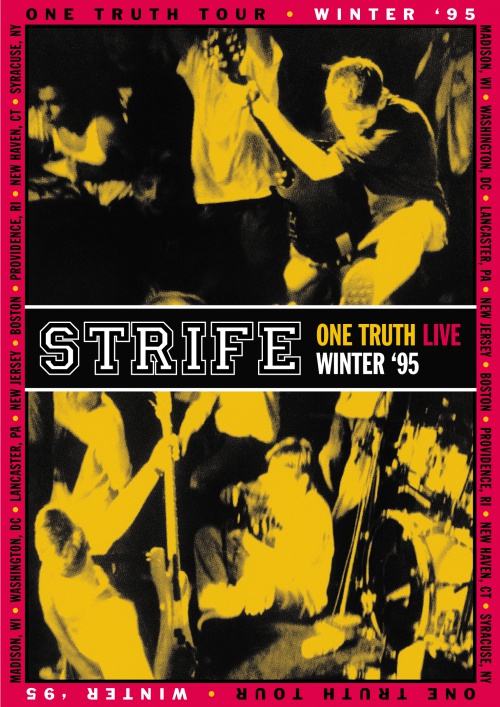
Speaking of metal, the second Strife album, In This Defiance, was mixed by Bob Marlette, a guy who has done stuff with the likes of Ozzy Osbourne and Rob Zombie. Did the success of the first album influence Tony/Victory to give you a bigger budget the second time around? Who’s idea was it to bring in Bob to mix the sessions?
I really can’t remember how we ended up working with Bob, but he did an amazing job mixing the record! We weren’t happy with the first batch of mixes that we got back from the guy who engineered the album, so we were actively seeking someone to mix it. Somehow we found Bob, and he really brought that album to life. After that we recorded the song “Untitled” with him for the Godmoney soundtrack. We tracked guitars at his home studio on Tony Iommi’s Laney Amps! I was really pushing to have him remix Angermeans once we got the first mixes back from the engineer as well, but we unfortunately would have been over budget.
How hard did the band tour In This Defiance? I ask that because I know at some point after that period, you guys felt burnt out on the band.
We definitely toured a lot. I feel like we toured pretty much non-stop from ’93 to ’97, especially compared to other hardcore bands at that time. Once In This Defiance came out, we were pretty much on the road a minimum of two weeks of each month. We had the full Warped Tour lined up followed by a tour with Hatebreed and Earth Crisis, and I think everyone just kind of freaked out.
SEE ALSO: 5 Metal Albums That Deserve Reissue Treatment, by Trevor Strnad (The Black Dahlia Murder).
Tell me about Turnedown, the band you played in during the Strife hiatus.
Turnedown started when Strife was still a band. Do you remember that band I was supposed to play bass for in 7th Grade? Well, my friend Mike was supposed to sing for that band, and he was the singer of Turnedown. We were heavily influenced by bands like Descendents, All, Dag Nasty, Samiam, Lifetime, and others. It was a lot different than Strife, and that’s really what made it fun. We were all really close friends and we would hang out, skate, and write music. We released a 7”, a split 7” with a local band called Homemade, a split CD released in Brazil with a band called Street Bulldogs, an LP on Sessions Records, and a final EP with our second singer (Joe from Fury 66). I think we really hit our stride with the last EP we released. Joe was a better singer than Mike and also had a much better stage presence. We got to play some amazing shows with bands like Avail, Los Crudos, Jets to Brazil, At the Drive In, and more. We even played a few shows on the Warped Tour. I think the band could had a chance to get much bigger if we kept it together.
What was the catalyst that brought Strife back together in 2000 after the hiatus?
Sid and I started a band called Angermeans. It was supposed to be a project with just the two of us writing and recording all of the music. We went into the studio to track a few songs and I quickly realized that my voice was not strong enough to sing on these songs. We ended up hanging out with Rick one night and we played him the songs and he said he was down to sing. Our 2-song demo was different recordings of “Life Stained Red” and “Spill no Blood." Rick knocked it out of the park and his vocals sounded more ferocious than ever before. Franklin from Shelter/108 played bass for us for a while and when he eventually moved back to New York, we asked Chad to play bass in the band. At that point it was 4/5 of Strife playing shows with all new material and one or two Strife songs thrown into the set. We could see that the kids wanted Strife. Our close friend Jesse passed away in 2000 and we decided to set up a few benefit shows to raise some money for his family. Jesse was a close friend, our roadie, and is also featured in the photographs on In This Defiance. We knew that we had to play the show as Strife. Our first show back was a benefit show for him at The Whiskey in Los Angeles.
Strife went on to release its third album, Angermeans, in 2002. That one seems to be the least popular record in the band’s discography. First off, do you agree with that assessment, and secondly, what are your thoughts on the album?
We were definitely in a weird place when we wrote the album. We all felt that we were confined to a box playing that type of hardcore that we do. We were all listening to a bunch of stuff outside of hardcore, too: Sepultura, Deftones, Tool, Smashing Pumpkins, At the Drive In, etc. We pretty much made the decision to make the album that we wanted and not try to please the hardcore scene.
What are your thoughts on the album today?
Musically speaking, I think it's a decent record. There are a ton of great riffs and some cool songs. Unfortunately, the recording is fucked up. We worked with a few producers and engineers that on paper looked like they could make a great record for us, but this recording was a mess from the day we started. I definitely think the record could have been saved if we remixed it before it was released. We spoke to Victory about it and they would not budge. I still think that was a big mistake. Angermeans is definitely my least favorite record and sonically it doesn't hold a candle to any of our other records. That being said, there are a few bangers on there like “Life Stained Red," “Angel Wings," and “From These Graves.”
If you can remember back to that point in your life in the early ‘00s, what was your relationship with hardcore like? Were you still listening to a lot of hardcore, and do you think the scene was healthy?
I was still going to shows from time to time, but I definitely wasn't as active as I am now or as I was before. I think a lot of bands were getting stale to me, and I really wasn't that interested. All of the bands were doing really bad Hatebreed rip-off stuff, or they were really trying to appeal to kids outside of the hardcore scene, and it just wasn't doing anything for me. It took bands like Terror, Internal Affairs, and a few others, to grab my interest again. I also had a cool band at this time as well. Ben Read from Earth Crisis moved to California and lived down the street from me. We started a more metal influenced band with Roy from Downset. We auditioned a bunch of singers including Jorge from Merauder, and the singer from Cast Aside, but we eventually had Carl Schwartz from First Blood sing. We recorded a 4-song demo with him that was never released that sounded like a mix of Merauder, Earth Crisis, and Lamb of God. Ben was an old friend of mine and it was so much fun playing with him until he disappeared!
SEE ALSO: 2017 interview with Jorge Rosado (Merauder, Akani).
I think the most recent Strife album, Witness a Rebirth, is killer. That came out in 2012. What are the chances of a fifth album coming out?
There is definitely a possibility of us making another record, we just need to make sure the timing is right. I have an album’s worth of songs written and demoed, so it wouldn’t be far fetched. Rick is about to have his first kid any day now, so I want to give him some time and see where his head is at before we dive into a new record. Hopefully it happens because these songs would make a perfect follow up to Witness a Rebirth.
Strife caught a ton of flack for some of its members not being straight edge anymore. Have people gotten over that by now?
It’s funny, because I think we got more shit than any other band that came back with members that are no longer straight edge. When we did press for Angermeans in 2002, we made it a point to let everyone know that we were no longer a straight edge band. Obviously, straight edge was a big thing for us, but I think Strife had a message beyond that and I feel that we can still make a positive impact on the world.
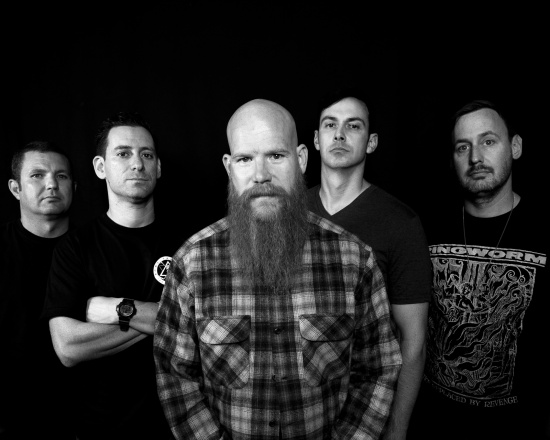
Cross My Heart Hope to Die was a band you released an album with in 2014. The lineup also features DJ Muggs, Sean Bonner, and vocalist Brevi. I’m pretty certain my good friend Sam Maloney was working with you guys at some point.
I started producing hip-hop tracks in the early '00s. I connected with the Cypress Hill/Soul Assassins camp early on through my friend Roy, and some of my first beats appeared on albums from Sen Dog (Cypress Hill) and the Reyes Brothers (Sen Dog and Mellow Man Ace). Eventually, I started working with a rapper named Young De (now known as Demrick) out of B-Real’s studio in Northridge (It was formerly known as Cornerstone where we mixed In This Defiance). In 2011 I released a record I produced called Carry on Tradition with a really good hip-hop site called 2Dopeboyz that featured B-Real, Freddie Gibbs, Krondon, Ras Kass, Apathy, Brevi, and others. I eventually started hanging out with Muggs and the idea of CMHHTD was born. We wanted to start a group that was more of an art collective than just a band and present music and art together. I brought Sean into the fold (who I was friends with since his early days as a graphic designer at Victory Records) and Brevi who I had worked with on my last project.
Musically, we were like a weird cross between Portishead, Massive Attack, Amy Winehouse, and Phantogram. Our first live show was at an art show called Vita E Morte which we held at Shepard Fairey’s Subliminal Projects in 2014. With Vita E Morte (which is Latin for "life from death") we were challenging ideas of what music and art, delivery and discovery, actually mean. By bouncing between the physical and the online, between wide release and hidden secrets, between artist and band, our goal was to bring wonder back into art and music. The purpose of the project was to create a cross platform between the sonic experience and the visual experience.
We released two EPs on Alpha Pup Records both of which were then packaged together as one LP that was released by Traffic.
World Be Free is a band you recently released an album with which also includes members of Gorilla Biscuits, Terror, and Despair, among other groups. You’ve done some touring, but what’s the status of any future plans for that band?
With World Be Free, we wanted to bring fun back to hardcore. Everything has been so serious for so long and we wanted to write songs and play in a band that not only would make people smile, but would give people the same feeling I feel when I hear bands like Gorilla Biscuits, Minor Threat, and Dag Nasty. We are all really happy with the record, and hopefully we will start playing again soon. Everyone is busy with other bands, but we all love playing in the band, so we will make something happen again soon. We have a song coming out on the new America’s Hardcore comp on Triple-B, as well as another song coming out on a comp that we are putting together ourselves. We’ve started writing some new songs as well. Again, it all comes down to timing.
Another musician who has collaborated with you many times throughout your career is Iggor Cavalera.
Iggor is one of my closest friends. It’s crazy how we met. We were playing a small show in Phoenix back in ’96. The show wasn’t that memorable aside from one of our friend’s setting off a fire extinguisher at the end of the set. After the show our merch guy came up to me and said, “Someone from Sepultura is here and they want to meet you…” That was Iggor! A few months later we were on a plane to Europe supporting Sepultura on the Roots tour. We even played the final show with Max [Cavalera] at the Brixton Academy.
We remained friends ever since. Iggor played drums on the song “Overthrow” on In This Defiance and later played drums on Witness a Rebirth. Working with Iggor is crazy. He’s one of my all-time favorite drummers, so it’s pretty amazing to be in a room writing and recording with him. For the last few years I have worked for Iggor as a drum tech as well. Aside from getting to watch him play every night we get to hang out everyday.
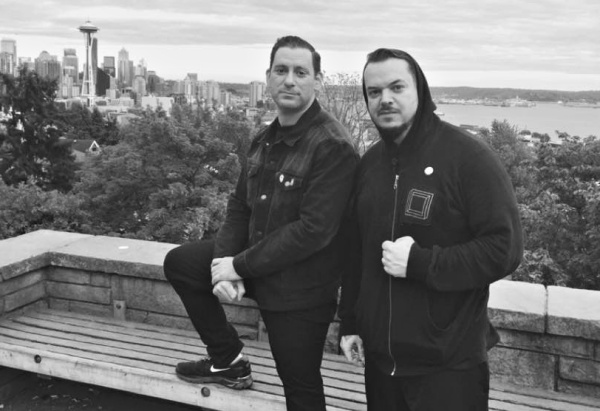
A couple of years back you started WAR Records, and you recently brought in Miracle Drug and Shadow of Doubt to your artist roster.
I always toyed with the idea of a record label, and it finally came together. I wanted to do something that gave back to the hardcore scene, and I thought that a label would be cool. Our first release was a Strife 12" called Incision. I think this was the perfect release to start the label off. Since then I have released a 7” flexi from Piece by Piece, a 12” EP from Reality Slap, a cassette from City Keys, and a cassette and CD from Shadow of Doubt. My next release is a 12” EP from Miracle Drug, and I’m really excited about that record. It combines some of my favorite elements of melodic DC hardcore from the '80s with some of the noisier elements of bands from the '90s like Threadbare and 108.
I do my best to get new bands exposure, and I really want to try to get hardcore kids from the States to recognize all of the cool hardcore bands that are from places outside of the US. That’s why I worked with both Reality Slap and City Keys. Reality Slap is from Portugal, and they have a hardcore sound reminiscent of bands like Turnstile and Backtrack, while City Keys (Sweden) have a sound somewhere between Turmoil and modern bands like Jesus Piece and Code Orange.
What else have you been up to as of late? Are you working on any new projects, music or otherwise?
I’m always up to something. I like to stay busy. I have a new straight edge band that will hopefully be playing some shows soon. We recorded a demo that we are going to release as soon as we have a show booked.
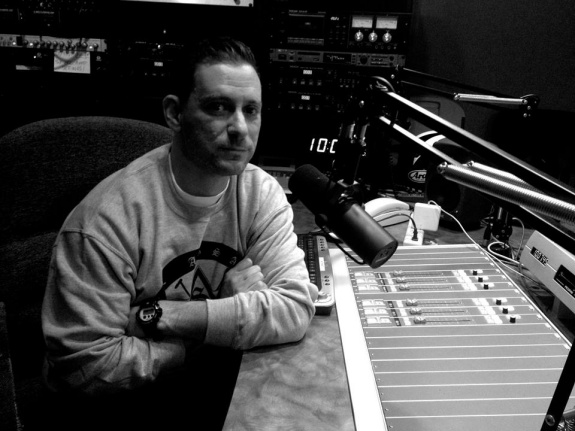
If you had to pick one Strife song to play someone who never heard you before that best captures the spirit of the band, what would it be and why?
I would say “Lift” is a song that really captures the spirit of the band. Musically speaking, it hits heavy and has one of my favorite breakdowns and sing-a-longs of any of our songs. Lyrically, the song is still relevant and really speaks of acceptance in inclusion within the hardcore scene or life in general. And we all need “Something to believe in…”
***
Follow Strife on Facebook, and check out what WAR Records has cooking at this link. Also, don't forget to follow World Be Free's Facebook page.
Tagged: andrew kline, hardcore, strife, world be free
